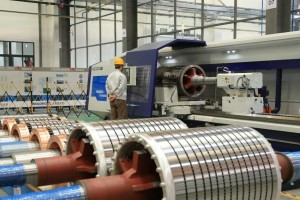A hydrodynamic bearing of a three phase electric motor is a bearing that uses fluid (gas or liquid) as a support medium to reduce friction between moving parts. Unlike traditional bearings, which rely on a solid surface to support the load, hydrodynamic bearings create a thin film of fluid that separates the bearing surfaces, allowing for smoother motion and reduced wear. This innovative design is particularly useful in high-speed and heavy-duty applications.
The main types of hydrodynamic bearings include journal bearings, thrust bearings, and tilt pad bearings. Journal bearings are commonly used in rotating machinery where the shaft rotates within a cylindrical sleeve. Thrust bearings, on the other hand, are designed to support axial loads and are typically used in applications such as turbines and gearboxes. Tilt pad bearings consist of multiple pads that can tilt to accommodate changes in load and speed, providing enhanced stability and performance.
One of the significant advantages of hydrodynamic bearings in asynchronous motors is their ability to withstand high loads while maintaining low friction levels. This increases efficiency and reduces energy consumption, making it ideal for applications in industries such as aerospace, automotive and manufacturing. Additionally, hydrodynamic bearings are less susceptible to wear than traditional bearings, resulting in longer service life and lower maintenance costs.
Another advantage is their ability to operate quietly, which is critical in applications where noise must be reduced. Additionally, hydrodynamic bearings can be designed to operate in extreme temperatures and harsh environments, making them suitable for a variety of industrial applications.
Hydrodynamic bearings represent an advanced solution for reducing friction and wear in electric motor’s systems, with many benefits that increase performance and service life.
Post time: Dec-31-2024


